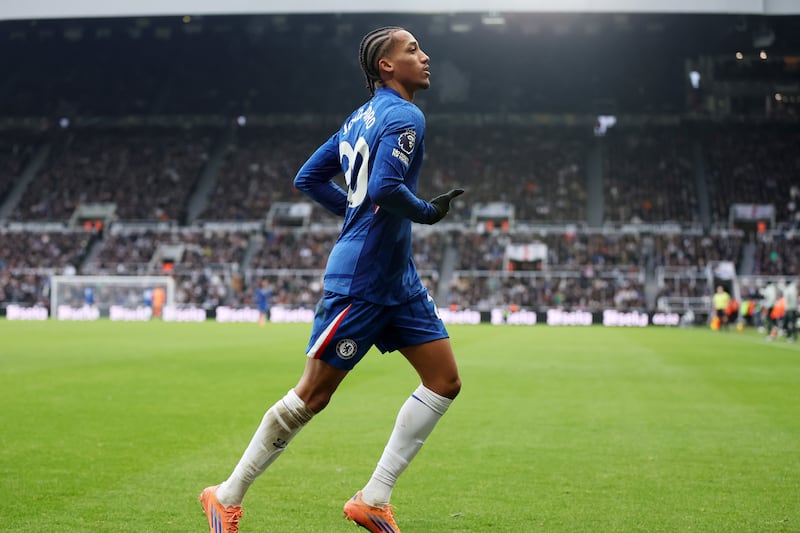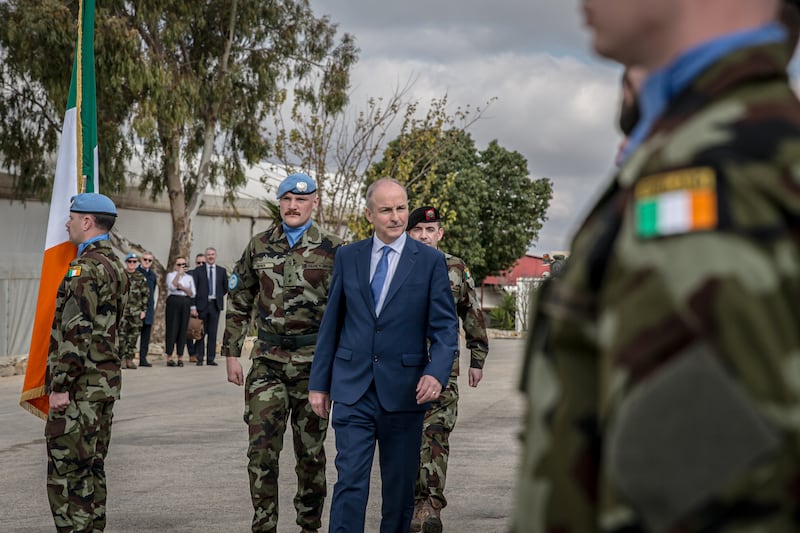Jennifer Aniston was trying to have a quiet weekend away. It was just after her 50th birthday, and she had boarded a plane for Mexico with six of her best girlfriends, most of whom have known her since her early days in Los Angeles, before Brad, before Justin, before Friends and before the tabloids, when they lived as neighbours on the same street in Laurel Canyon. ("We called ourselves the Hill People," she says.) But a few minutes in, the pilot asked to speak with her. They had a tire missing, and they would have to return to Los Angeles.
As the pilot burned off fuel, Aniston spent the next four hours cracking jokes and trying to remain calm (she is terrified of flying) while fielding text messages from friends who had read about the “emergency landing” – which hadn’t actually happened yet.
The women landed safely, switched planes and, the next night, gathered for a ritual they’ve been doing for three decades: a goddess circle. Seated on cushions, cross-legged on the living-room floor, they passed around a beechwood talking stick decorated with feathers and charms, much as they had done for every major event of their lives. They had circled before Aniston’s weddings to Brad Pitt and Justin Theroux. They circled when babies were born, and when Aniston and Theroux had to put down their dog, Dolly. This time they set the circle’s intention: to celebrate how far they’ve come – and to toast Aniston’s next chapter.
“It’s so weird. There’s so much doom around that number,” Aniston says of 50, noting that the New Yorker in her – she spent most of her childhood on the Upper West Side – is slightly horrified at the thought of the term “goddess circle” appearing in a story about her. “Should we just call it a ‘circle’?” she asks.
We are sitting in the kitchen of her sunny, mid-century Bel-Air home, on a Tuesday afternoon. She is warm and radiant, which is how glossy magazines often describe her, and also thoughtful, inquisitive and self-deprecating, which is not.
She asks about the meaning of my tattoo, which leads to a conversation about my dog, which leads her to ask Siri, “Hey Siri, what does a cockapoo look like?” (“I’m like a weird dog person, it turns out, like a dog lady,” she says, running her hand through her dog Clyde’s fresh haircut.) She is surprisingly unguarded for someone for whom the tiniest kernel of news can transform into a thousand stories.
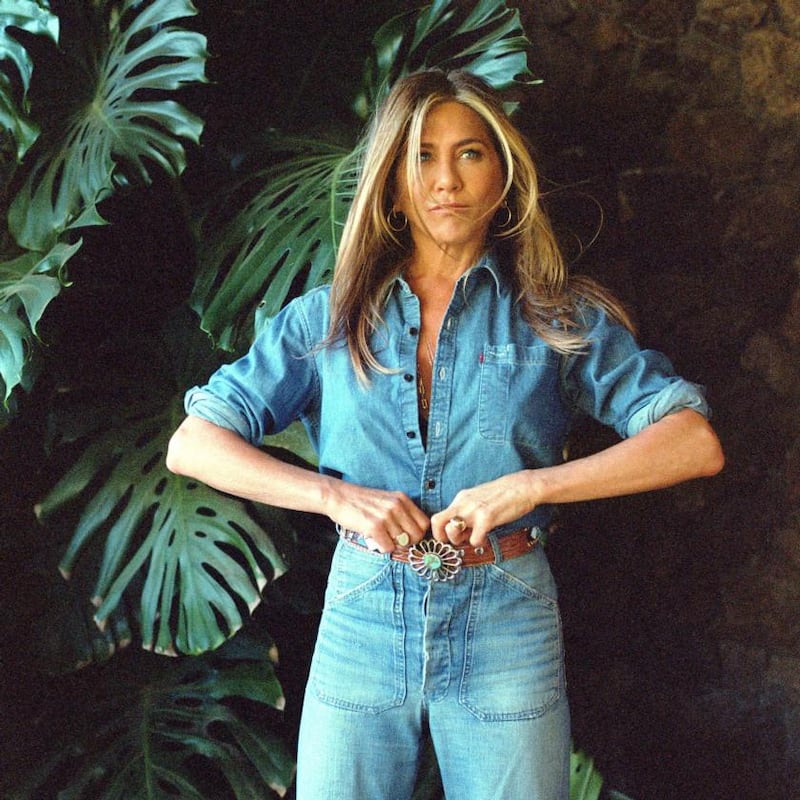
But about that age thing: “I’m entering into what I feel is one of the most creatively fulfilling periods of my life,” she says. “Seriously,” she continues, pausing to knock on her wooden coffee table. “I’ve been doing this for 30 years, and I feel like it’s just about to really bloom.”
This is the kind of thing actors say all the time in interviews. But in this case, it feels like more than a platitude. Since Friends ended, Aniston has had critical success in smaller independent films, mixed reviews for mainstream movies, a lot of product endorsements, a couple of outright flops. But nothing has clicked quite like Rachel Green, the beloved runaway bride she played on Friends. She has spent 15 years taking parts that had the potential to get her past that iconic role, that haircut, that “cloak of Rachel”, as she once put it – but they didn’t deliver. Perhaps the only way to do that may be to return to the medium that made her famous.
So, come November 1st, she’ll have a homecoming of sorts as the star of Apple’s The Morning Show, a big-budget drama set behind the scenes of a news show that looks a whole lot like the NBC talkshow Today. Aniston plays Alex Levy, a serious morning anchor whose personal life is complicated and professional life is more so, compounded by the sudden firing of her long-time cohost (played by Steve Carell) for sexual misconduct.
For Apple, the show represents the shiniest bauble in its launch slate as it attempts to challenge the likes of Netflix with a streaming service of its own – and among the first shows to hang its premise on #MeToo. For Aniston, who is the spine of the show as both a lead and an executive producer, it's the chance to dig into a more sophisticated dramatic role that, as she puts it, has everything: "children, guilt, power struggle, being a woman in the industry, going through a divorce, publicly going through a divorce, feeling alienated, being just a little bit of a screw-up."
It’s a role that is asking her to draw on more of her personal life than ever before. And it may also be her best chance to finally get the world to see her as an actor, not just a star.
‘We basically just started over’
The Morning Show didn’t begin as a #MeToo story. Three years ago, when Aniston told Michael Ellenberg, a former executive at HBO who oversaw Game of Thrones and The Leftovers, that “television is not – not – an option for me,” Matt Lauer was still presenting Today and Harvey Weinstein was gunning for Oscars. “I said to him, ‘I just want to be a part of something great, I don’t care where it lands,’” Aniston recalls. “Because, God knows, the movies have been great and they’ve been horrible, so you just don’t know.”
When Ellenberg later phoned Aniston to tell her he'd acquired rights to Top of the Morning, a nonfiction book by the media reporter Brian Stelter that delves into the drama-filled world of morning television – and had also spoken to Reese Witherspoon, with whom he worked on Big Little Lies – the women immediately called each other.
“We were so psyched,” says Witherspoon, who has known Aniston since they played sisters on Friends. She notes that the two had wanted to work together for some time but that it was rare to have “two very, fully fleshed out female leads in one project”.
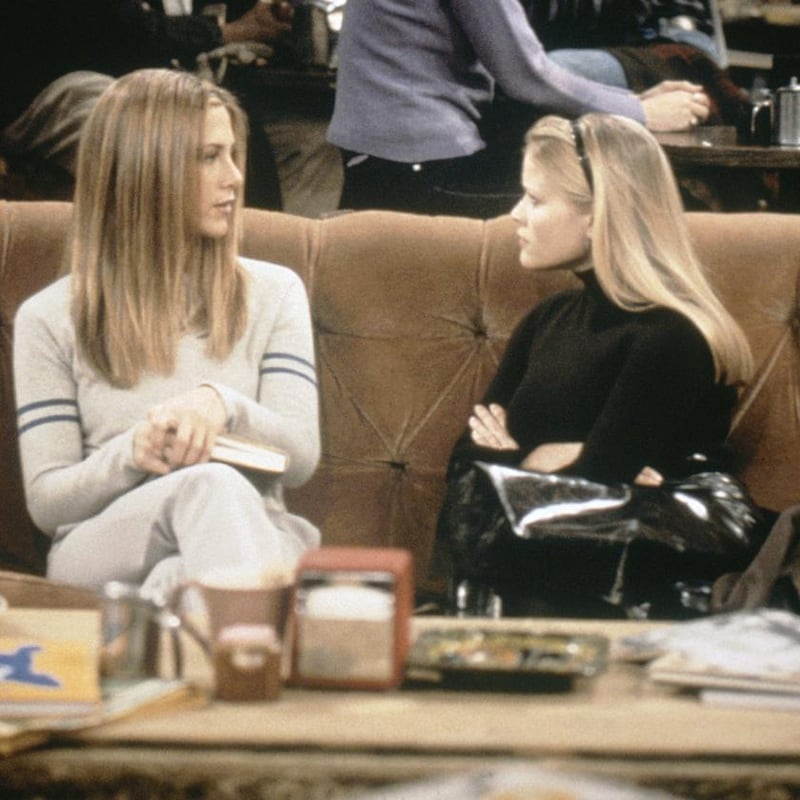
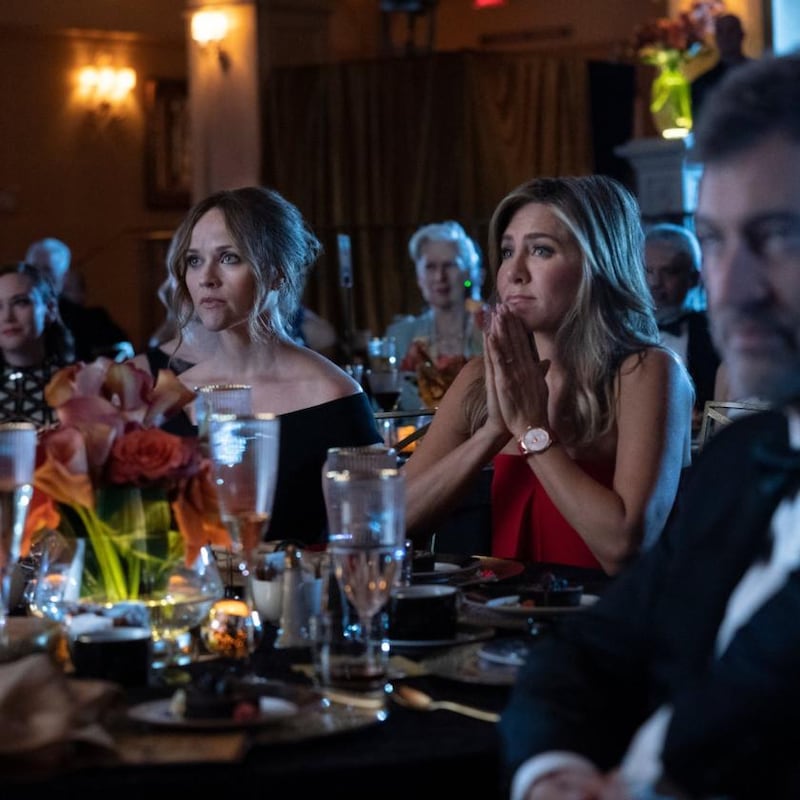
Aniston signed on to play Alex, a morning host who must traverse the cut-throat, ego-filled world of TV news as a woman in her 40s who executives declare is past her prime. She collides with Witherspoon’s character, a brash, younger reporter who may be gunning for her job or could become her best friend; we aren’t yet sure.
Apple bought the show in a bidding war and ordered two seasons. If the people who brought you the iPod were going to compete with Netflix and Hulu, Aniston and Witherspoon – who also serve as executive producers – seemed like a pretty good bet. “I just felt like this was exactly what we were looking for,” says Eddy Cue, a senior vice-president at Apple overseeing the new service, who declines to name the price the company paid for the show but acknowledges that the draw of luring Aniston back to TV added to the appeal.
But then Weinstein happened. Charlie Rose was fired from CBS. Lauer was fired from Today. “And we basically just started over,” Witherspoon says. “We had to.” Kerry Ehrin, a creator of the series Bates Motel, was brought in to write a new script, replacing the original showrunner. The updated premise: Alex’s longtime cohost is fired after news of his behaviour on the job (and in his dressing room) becomes public, throwing the show and her career into chaos.
Carell would be cast to play the disgraced anchor – whom Aniston describes as a kind of lovable, cocky narcissist who, like so many powerful men before him, “just thinks everybody wants to sleep with him”. Witherspoon’s character would be positioned as a potential replacement to fill his now open anchor chair. The Morning Show would still tackle gender and ageism but also tell a more complicated story of what happens when an idol falls. What does it mean for his unknowing colleagues and friends, like Alex? His ability to seek redemption? And, without knowing exactly of what he’s accused, whose side should we be on?
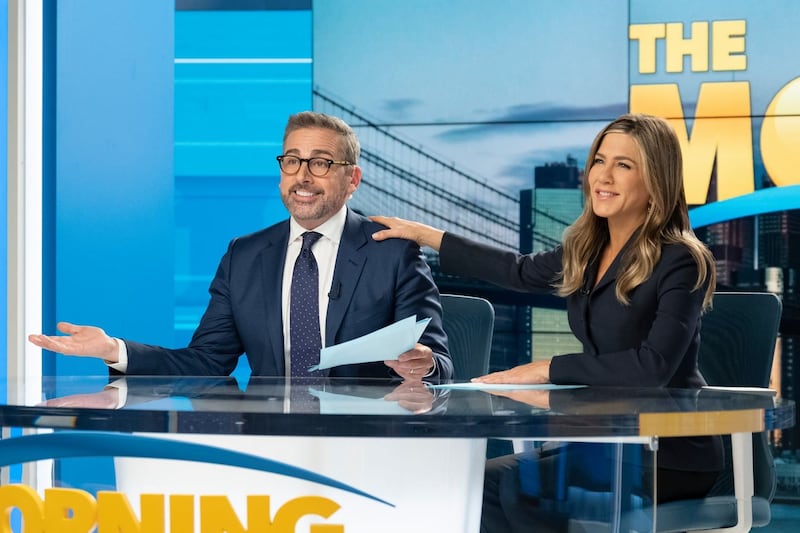
The ‘garage band days’
Now is the point in many of these interviews when the reporter asks the subject if she, too, has a #MeToo story. Aniston says she does not, although she has certainly experienced her share of sexism in 30 years in the business. “Agents,” she begins, ticking off a list. “Studios. Finding out what this actor made versus that actor made.”
It's our second meeting at her vast, modernist home, and this time we're joined by Kristin Hahn, Aniston's best friend of three decades and producing partner of two, who is also an executive producer on The Morning Show. The duo reflect on what it was like when they began in Hahn's garage in Ojai, California, 18 years ago ("We call them the garage-band days," Aniston says) to try to make movies.
“It was so much harder...” begins Hahn; “...to get our phone calls taken”, finishes Aniston. “Now actors are taken more seriously as producers,” Hahn continues. “But when we started, even though Jen had been on a TV series for eight years, it was still a little like, ‘Oh, isn’t that cute.’”
It was there in that garage that Hahn and Aniston, with Pitt, cofounded the production company Plan B, which was then called Bloc Productions, a name that had come to Aniston during a game of Scrabble, she says. They developed The Time Traveler’s Wife, A Mighty Heart and The Departed, on which Hahn was an executive producer.
When Aniston and Pitt’s marriage ended, Aniston and Hahn decided they would be the ones to leave the company. “It was the symbolic equivalent of, ‘I’ll move out of the house,’” says Hahn. Plan B went on to develop the Oscar-winning films 12 Years a Slave and Moonlight, while Aniston and Hahn formed their own company, Echo Films, as a side project when Hahn wasn’t writing – she wrote the screenplay for the Netflix movie Dumplin’ – and Aniston wasn’t acting.
“Our mission statement was, Tell strong stories about strong women,” Aniston says. “Flawed, complicated, messy. ’Cause that wasn’t happening.” (Currently in development: First Ladies, a political comedy for Netflix in which Aniston will play the first lesbian president, opposite Tig Notaro, and The Goree Girls, a project about one of the first all-women country bands.)
As a producer on The Morning Show, Aniston was, according to colleagues, as “detail-oriented” (Hahn), “thorough” (Ellenberg) and precise – “involved with every set, with every costume, with every piece of casting,” says Witherspoon. When I mention to Aniston later that many had noted her attention to detail, she jokes that was “basically nice ways of saying ‘obsessive’”.
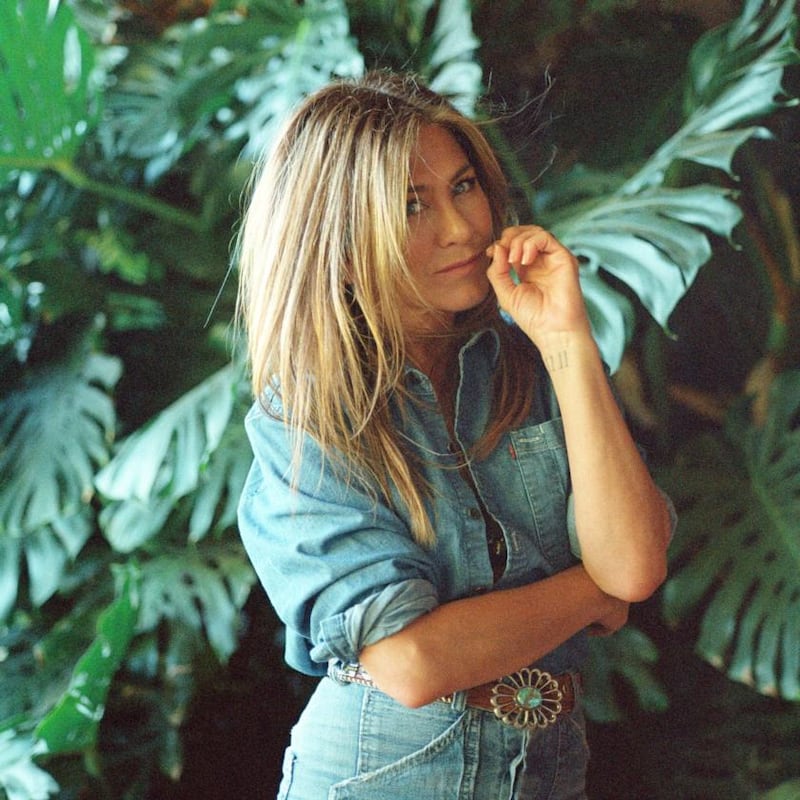
To research her role, she went behind the scenes at the ABC show Good Morning America and spent time with Diane Sawyer, the former news anchor who had been one of its hosts, studying everything from her clothing choices to her caffeine habits, which involved toggling between Coca-Cola, Red Bull and coffee. On set, Aniston handpicked her character’s books (100 Years of Bauhaus on her coffee table, Malcolm Gladwell’s Blink in her work bag), the sconces in her apartment (French modern) and her clothes (tailored; monochromatic; an occasional pop of colour).
She hung photographs of her real-life friends – the “Hill People” – in Alex’s dressing room and apartment. There were times Aniston and Ehrin, the showrunner, had healthy disagreements – such as whether Alex, upset with her daughter, would actually say a phrase to the effect of, “I practically broke my vagina with that big head of yours,” using an expletive before “vagina”, to describe childbirth.
“I was, like, that would just never come out of my mouth! Alex’s mouth,” says Aniston, becoming animated. “And Kerry kept saying, ‘Trust me on this,’” says Hahn. After two weeks of back and forth, Aniston finally agreed to try the line – and they got it on the first take. “It just flew out of my mouth,” she says. So ultimately she thought Alex would say it? “Yes,” she says. “But, mind you, I’m playing a person who’s a mother. I’ve never shoved anything through my vagina, you know what I mean? So it’s sort of like understanding where it comes from, you know, like tapping into all of the mothers that I know, and understanding how something that hysterical and vulnerable and raw is possible.”
Hahn leans over to note that Aniston had, in fact, been there – in the room, at the foot of her bed – for the delivery of Hahn’s daughter. “I could have actually done it if the doctor had let me,” Aniston says. “I literally came back into consciousness hearing the doctor saying, ‘Uh, Jen, you’re in my light. I can’t really see,’” Hahn says. “That’s what friends are for.”
‘There’s a similarity to my life’
You could say that the story of Alex Levy is also the story of Jennifer Aniston: one of being underestimated and overexposed, known for a thing that may or may not have anything in common with who you actually are, trying to reassert control over your narrative.
“Jen has lived in the public eye for so long,” says Ellenberg. To play the role of Alex, he says, “she’s drawing on real stuff in her life”. Alex, who is declared by her male boss to have passed her “sell-by date”. Alex, whose smooth smile appears on billboards across the city but whose life at home is more complicated. Alex, who the world feels they know intimately, personally, but are nowhere near acquainted with.
“There’s a similarity to my life,” Aniston acknowledges. “I relate in ways of feeling like, when you don’t want to be seen, and you don’t want to go out of the house, and you want to just scream, and you don’t want to walk on a red carpet. I don’t want to stand behind a podium, I don’t want to have my photograph taken, I want to just cry today. You know?”
I ask if she could have played this role at any other point in her life. “No,” she says firmly. “I didn’t have the experience.”
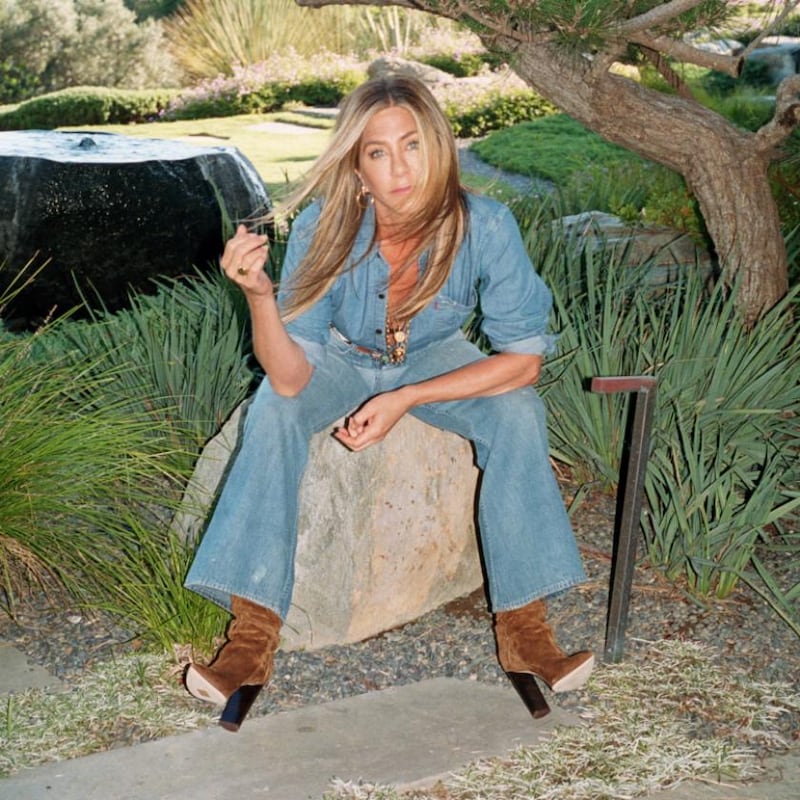
There is a saying that’s popular these days, translated into memes and posted on Instagram, that the freedom of aging as a woman is the ability to just care less (said with a punchy expletive). Aniston sort of buys that, but she thinks the freedom may come more from working than age. “It’s experience backing up ambition,” says Hahn.
As they are talking – and I’m preparing to leave – another member of the goddess circle, Andrea Bendewald, who is Aniston’s oldest friend and also plays Alex’s make-up artist on the show, walks into the house holding a book that the group is reading. It’s called Lifespan, written by a Harvard Medical School scientist, David Sinclair, who makes the case that the key to slowing down the aging process is to access the so-called vitality genes.
They are worried that mention of this book will make them appear like they’re obsessed with not aging, but perhaps what it signifies more clearly is that they are interested in longevity – the longevity to keep working, to keep taking risks, to redefine themselves.
“It’s taken time for me to get where I am, and I put a lot of work into my craft,” Aniston says. “I’ve failed. I’ve succeeded. I’ve overcome. I’ve, you know, I’ve stayed around. I’m still here.” That, in Hollywood anyway, is perhaps the most radical thing a woman can do. – New York Times












